.jpg)
1985 Mercedes-Benz 280SL
The story of my 280SL
The story of this 1985 Mercedes-Benz 280SL roadster starts in El Salvador. In 1985, El Salvador was in the midst of civil war. Among the personnel stationed at the U.S. embassy in San Salvador was James G. Trum. A state department employee, he was the controller for the embassy and as such was responsible for its finances. Jim had for some time been an auto enthusiast. While in Santiago, Chile in the late ‘70s, he belonged to Antique Car Club and participated twice in the rally from Santiago to Vina del Mar in his 1934 BMW pictured at right, coming in second one year.
.jpg)
A
guerrilla attack took place in the Zona Rosa nightclub area of San Salvador, El
Salvador at approximately 9:30 p.m. on June 19, 1985, during the Salvadoran
Civil War. The attack was conducted by gunmen dressed as Salvadoran soldiers,
and in total twelve people were killed: four United States Marines, two United
States businessmen, a Guatemalan, a Chilean, and four Salvadorans. A left-wing
guerrilla group, the Central American Revolutionary Workers’ Party (PRTC), and
its armed wing, the Mardoqueo Cruz Urban Commando (CMC) claimed responsibility
for the attack. Jim and his sons Chris and Brian were present at the time of the
attack and were fortunate not to be injured.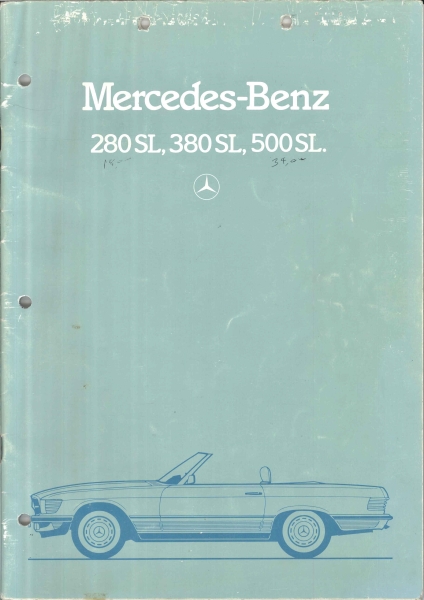
Around the same time, Jim decided that he would like to buy a car. The diplomat was interested in Mercedes and picked up the Spanish language version of the SL model catalog for 1985, which I received when I purchased the car.
Jim chose a sporty Signal Red Mercedes-Benz 280SL, equipped with a five-speed transmission and a Palamino interior. This car was not purchased off the lot, but was ordered by Jim. He says that there were very few SLs in San Salvador. The car was generously optioned with air conditioning, dual climate controls, power passenger mirror, central locking, power windows, and an optional back seat. Even though 280SLs were not equipped with it, Jim had the dealer install the rubber decklid spoiler that was standard equipment on 500SL models. He ordered the mid-line Becker radio and opted for vinyl instead of leather seats out of concern for durability.
A certificate from the El Salvador Customs Service establishes that the Mercedes passed through El Salvador customs from Germany to an American embassy employee on August 15, 1985. It shows the original purchase price as $21,297.30, though Jim states that he paid a discounted amount. He said that he paid around $17,000 or $18,000 with his diplomatic discount. Apparently he at least briefly considered the 500SL, since it looks as though he was writing prices on the cover of the brochure, above.
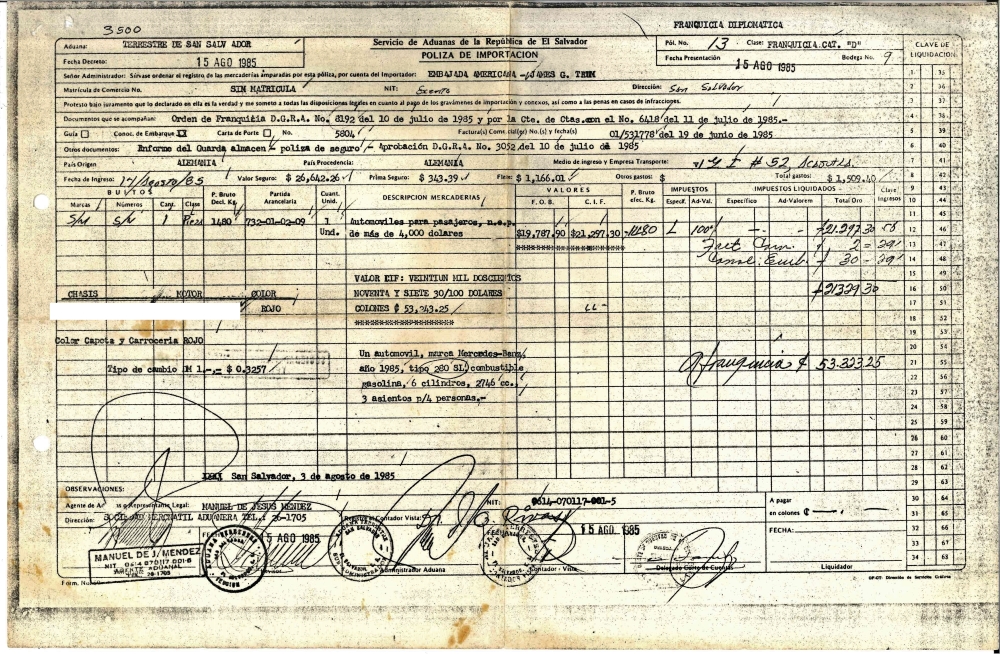
The top of this form reads:
Servicio de Aduanas de la Republica de El salvador
Sirvase ordenar el registro de las mercaderias amparadas pro esta poliza, por cuenta del importador: Embajada Americana - James G. Trum
Translated:
Customs Service of the Republic of El Salvador
Kindly arrange the registration of this policy pro merchandise covered by the importer: American Embassy - James G. Trum
The local dealership, LA Universal, Inc., gave Jim a service reminder that recorded the mileage at delivery as 11 kilometers, and requested that the car be brought back for an oil change at 1,000 kilometers.
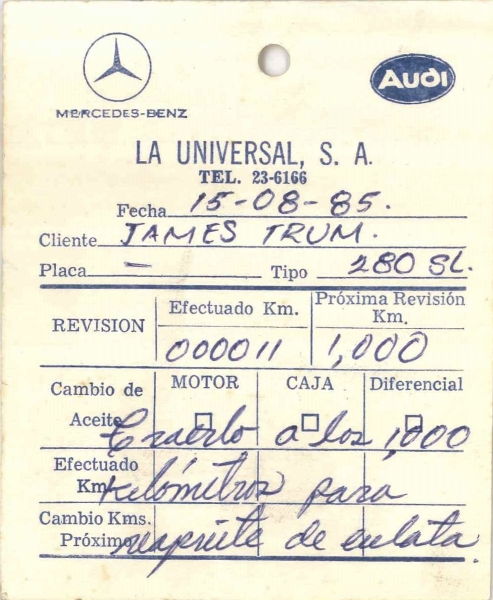
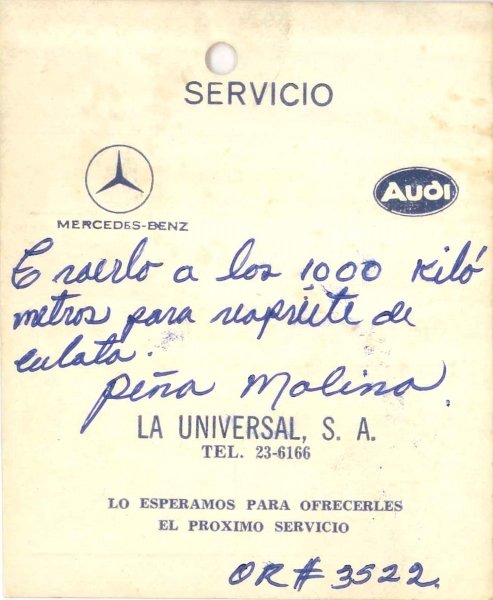
The file also contains a certificate of registration:
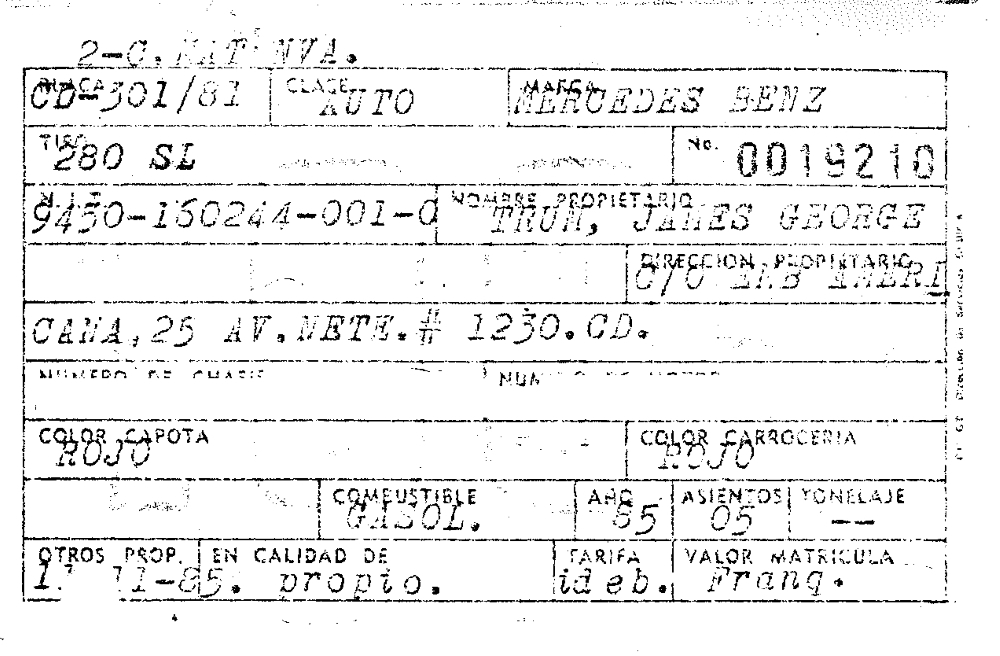
Jim had the car detailed every week by a local man. Service calls at the dealership were recorded in the owner’s manual:
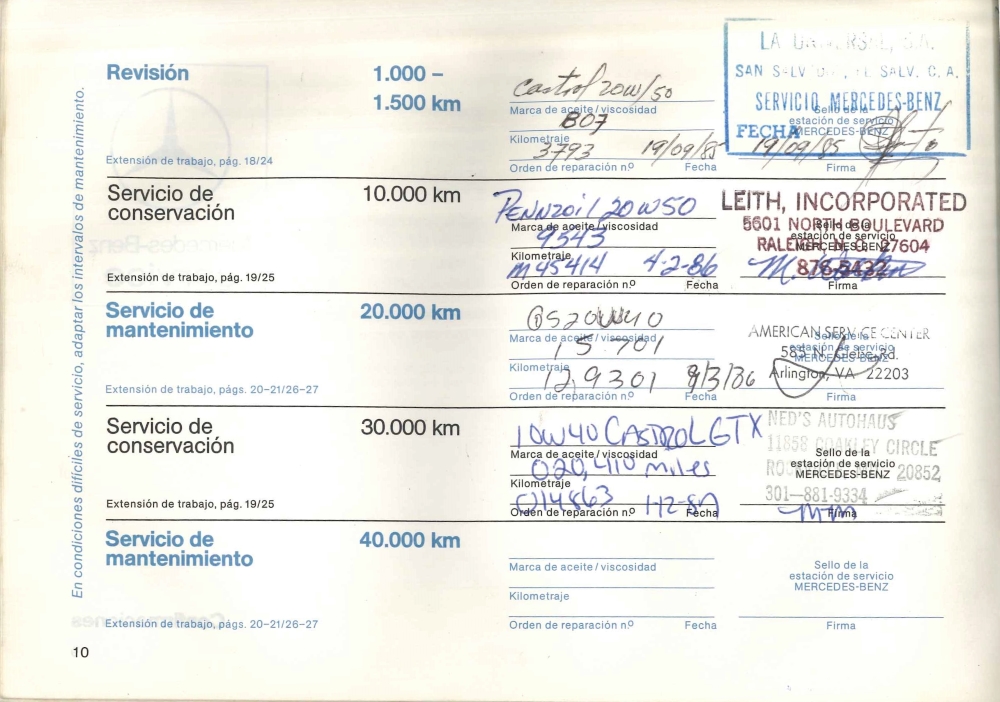
By March 1986, Jim was headed back to the United States, and on March 5, 1986, the El Salvador Department of Traffic certified that the car was free of liens and could be exported from the country within the next ten days.
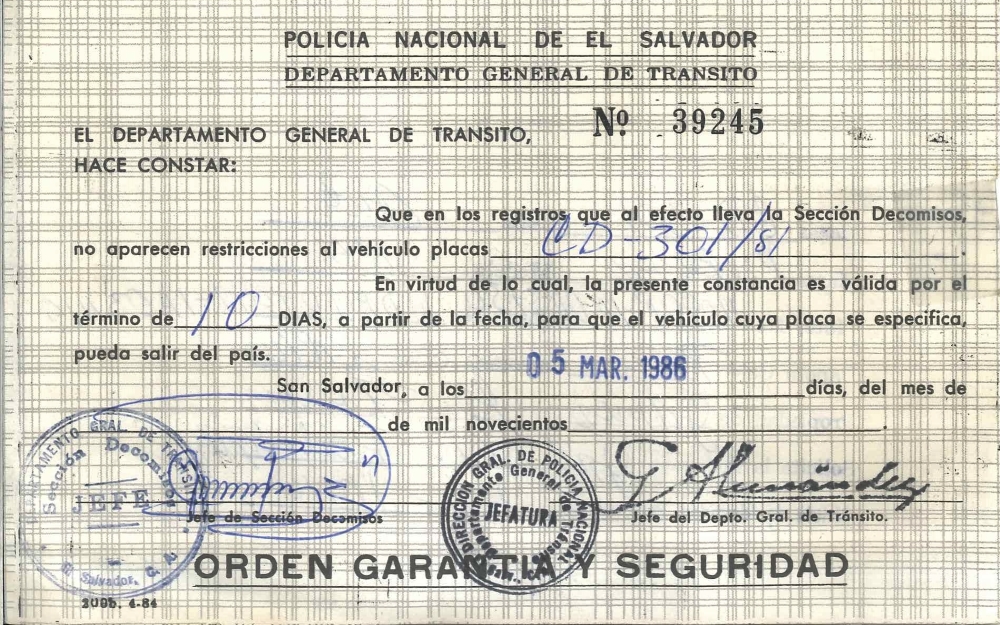
POLICIA NACIONAL DE EL SALVADOR
DEPARTAMENTO GENERAL DE TRANSITO
EL DEPARTAMENTO GENERAL DE TRANSITO, HACE CONSTAR:
Que en los registros que al efecto lleva la Seccion Decomisos, no aparecen restricciones al vehiculo placas CD-301/81.
En virtud de lo cual, la presente constancia es valida por 10 dias, a partir de la fecha, para que el vehiculo cuya placa se especifica, pueda salir del pais.
ORDEN GARANTIA Y SECURIDAD
Translated:
POLICE OF EL SALVADOR
GENERAL DEPARTMENT TRAFFIC
EL GENERAL DEPARTMENT OF TRANSIT NOTES:
That the records maintained by the Forfeitures Section, no restrictions appear for the vehicle plates CD-301/81.
Under which, the present record is valid for 10 days, from the date that the vehicle whose plate is specified can leave the country.
ORDER GUARANTEE AND SECURITY
This is the reverse side of the form:
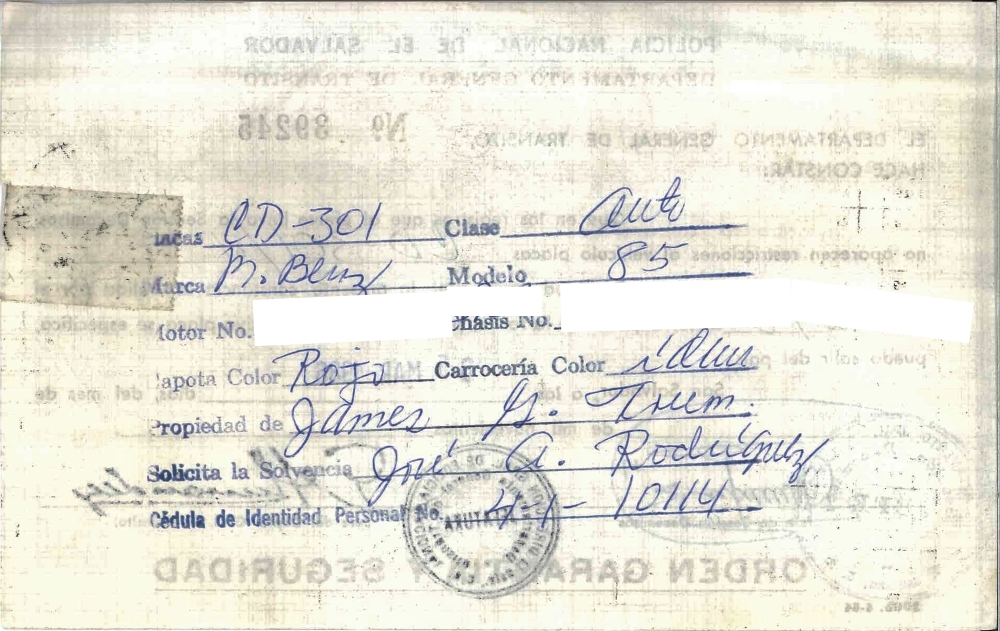
In late March and early April 1986 the 280SL was driven back to the United States. Jim relates that he and his son Chris drove the car from San Salvador to Brownsville, Texas, the port of entry, in a day and a half. They traveled at speeds around 100 mph and took only a three hour break to sleep in the car. AAA provided them with an eastern route but they went west to the Pacific Coast through Guatemala to avoid guerilla warfare activity in that country. The drive from San Salvador to Alexandria would have been almost 3,600 miles and passed through Guatemala and Mexico. It’s doubtful that anyone would consider making that trip today in a brand new Mercedes.
The service records kept in the car, above, indicate that the car received an oil change in Raleigh, North Carolina April 2, 1986; Jim stopped there on his way home, as his sons lived there at the time.
On April 18, 1985, Mid-Atlantic Auto Works, Inc. completed work on the car to meet US federalization requirements at a cost of $4,560.00.
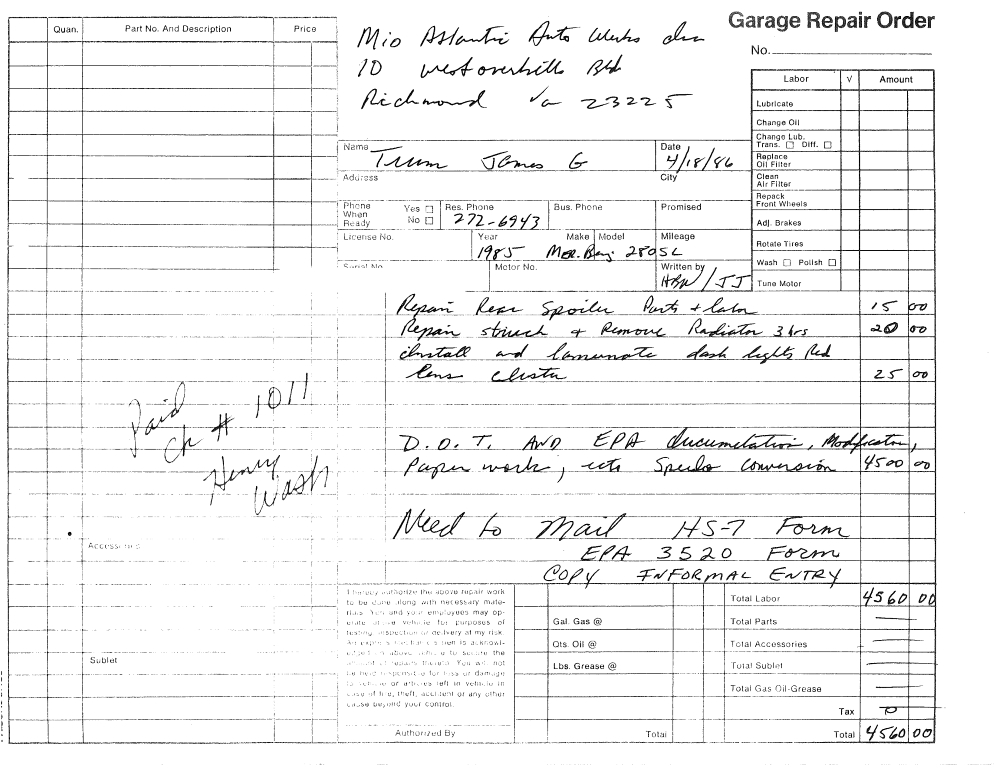
Records regarding the importation and federalization of the car include the EPA Form 3920-1 and the US Department of Transportation HS forms 7 and 139.
These records show that the vehicle was driven to Alexandria; the EPA form and the HS form 7 show Alexandria as the port of entry, but both state that the vehicle was driven in, and the HS form 139 states that the port of entry was Brownsville, Texas.
The HS form 139 details every change made to the vehicle to comply with US federalization requirements.
The following pages show the documentation related to federalization of the car.
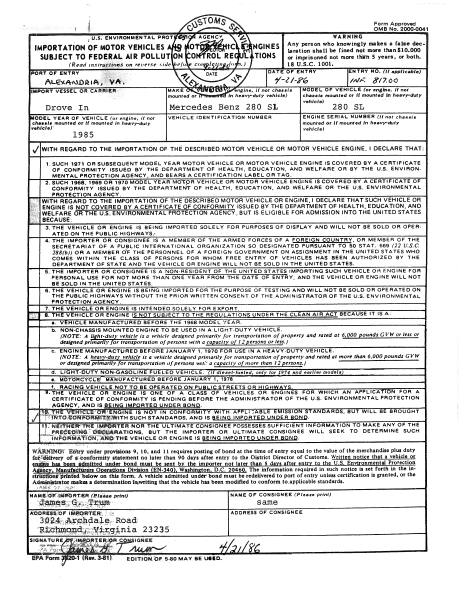
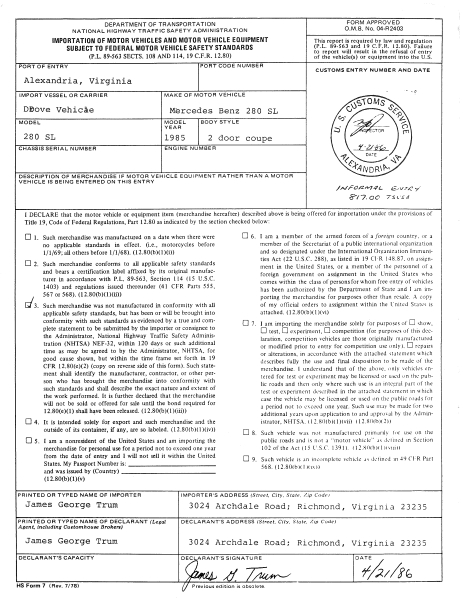
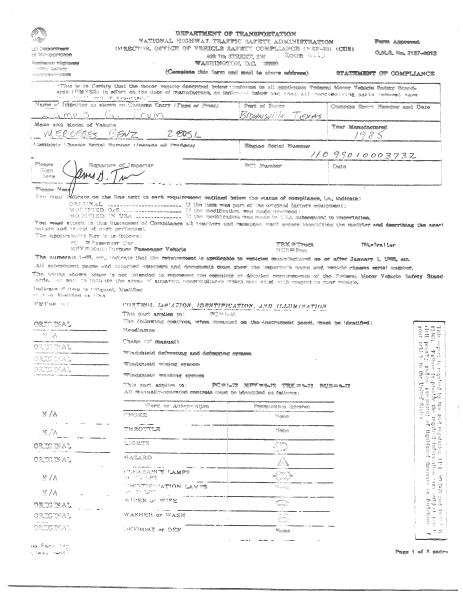
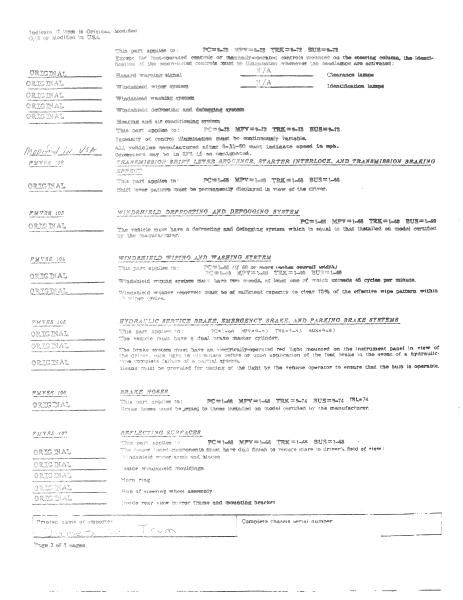
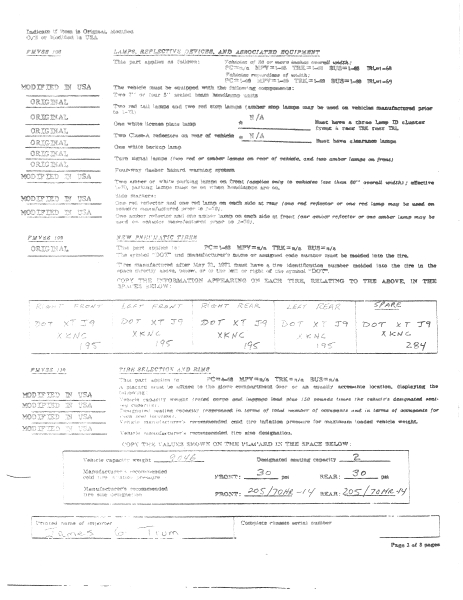
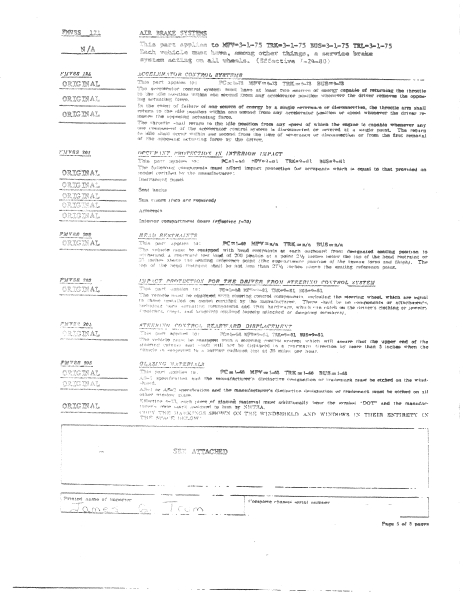
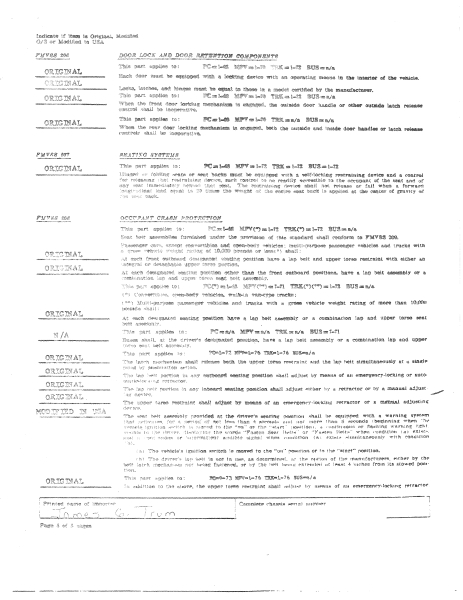
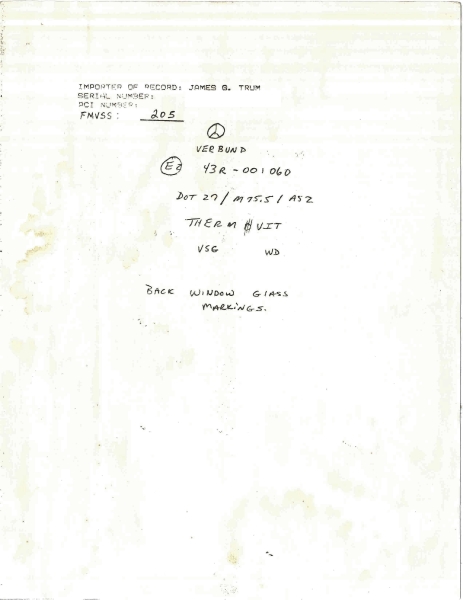
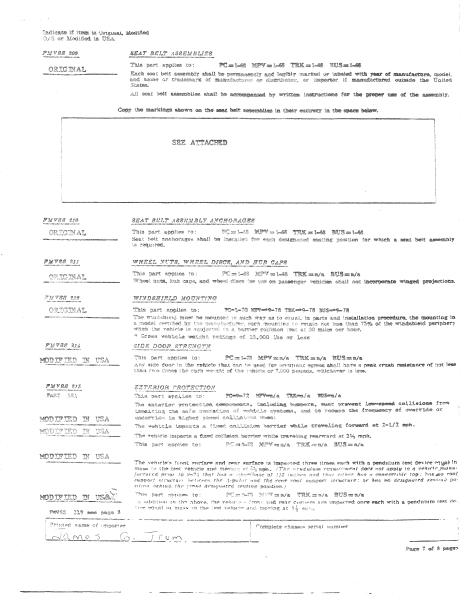
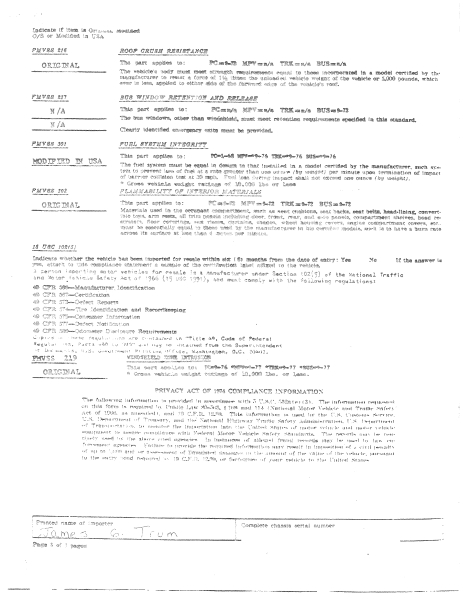
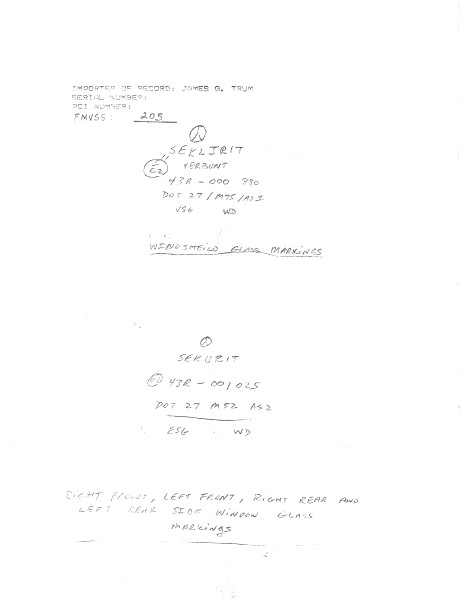
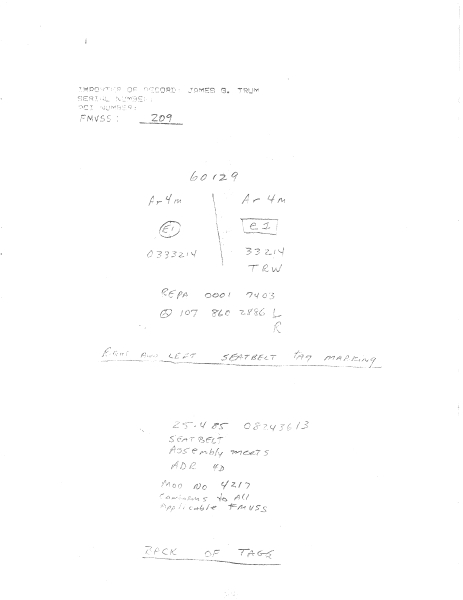
Back to the Norman C. Witte Command Center